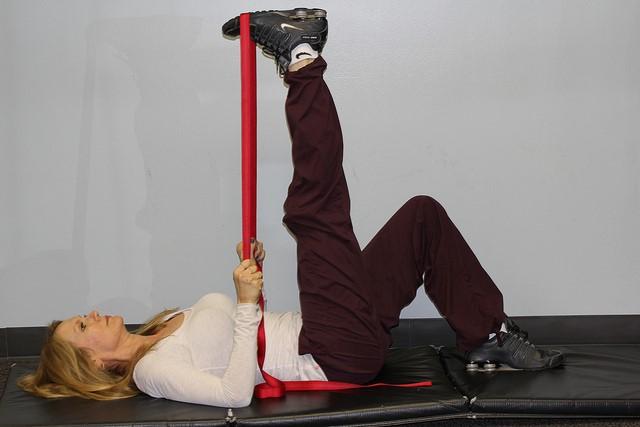
Right about now, some of us may be straining to adhere to our New Year’s resolutions about exercise. As a practicing sports medicine specialist at OHSU, I can say, unequivocally, that an investment in physical activity now will pay big dividends later, especially as we age.
Consider this: Each year after age 30, we lose an average of 1 percent of lean body mass and maximal oxygen uptake or VO2Max. Between ages 70 and 80, we lose three times that rate.
This loss of muscle mass and VO2Max, known as sarcopenia, is a primary cause of disability from falls and hip fractures, and premature death as we age. Exercise has been shown to reduce sarcopenia, but not all types of physical activity are the same when it comes to gaining muscle. What is the No. 1 way to increase lean body mass and reduce sarcopenia? Resistance exercise and strength training are the best and should be a priority for those of us who find ourselves on the AARP’s mailing list.
There are some important guidelines to discuss with your health care provider before you get started: If you’re 50 or older and currently do not exercise, check ask your clinician whether an exercise stress test should be conducted prior to starting. This is especially important for people with cardiovascular disease risk factors like high blood pressure, high cholesterol, smoking, obesity, diabetes, a pulmonary disease like asthma, and rheumatologic disease like arthritis.
A 2015 article by aging and exercise experts based in Italy and Australia provides some general principles for older adults who want to start a resistance training program:
Types of strength training include lifting weights (machines or free weights), body resistance (push-ups, sit-ups, pull -ps) and straps (suspension trainers, resistance bands).
Warm-up and cool-down periods should be twice as long for seniors. Rather than 5 to 10 minutes for warmup and 5 to 10 minutes for cool down, optimal warm-up activities should last 10 to 20 minutes, and 10 to 20 minutes should be designated to the cool-down period.
It is important to stretch active muscles in both periods, and the warm-up session should include progressive muscle strengthening.
Move the resistance through the entire range of motion and avoid heavy lifting. To learn proper technique, you should have an orientation session with an exercise trainer or join a strength training class.
Older adults need a longer rest period between sets in traditional strengthening (1 to 2 minutes) as well as safe physical environments are necessary.
The average frequency should be three days per week and the individual should wait at least 48 hours between training sessions.
Do not hold your breath during a strenuous movement, but breathe regularly throughout the range of motion.
Never work through the pain. If you develop pain during a lift or movement, stop the exercise and rest. Consult a health care provider if the pain persists.
Strength training is the best way to reverse the effects of aging and sarcopenia. A book published by the Centers for Disease Control and Prevention called “Growing Stronger – Strength Training for Older Adults,” is the most complete, easy-to-read way to get started with resistance exercise. Doing this type of exercise builds strength to maintain bone density improve balance, coordination and mobility, which will reduce the risk of falling and help maintain independence in performing the activities of daily life.
Dr. Kerry Kuehl is a professor of medicine (sports medicine and health promotion) in the OHSU School of Medicine and director of the OHSU Human Performance Lab. He can be reached at [email protected].